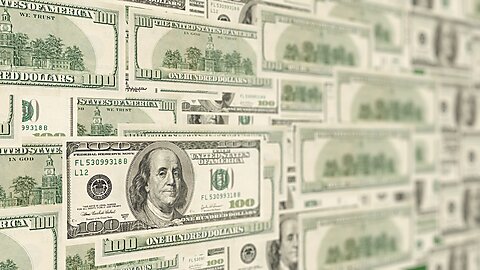Gabriela Calderon de Burgos
Since Javier Milei not only made the campaign for Argentina’s presidency a three‐horse race but became the likeliest to occupy the Casa Rosada this coming December, there has been much reporting in the international press about dollarization, his frontline proposal. On this topic, there seems to be plenty of confusion, and so I’d like to recommend what I consider are essential readings to clear the fog.
Let’s begin with the books. Central bankers and their fans tend to be allergic to the very idea of dollarization. By and large, they have not been trained on the topic. For a quick monetary history lesson, I recommend Nobel laureate F.A. Hayek’s classic The Denationalisation of Money (originally published in 1976). This will give you a brief background on the history of money and central banking and the philosophy behind what makes money universally accepted.
If you want to jump straight into dollarization, the best and most practical book is Manuel Hinds’ Playing Monopoly with the Devil: Dollarization and Domestic Currencies in Developing Countries (2006). Hinds explained to me that he did not intend to write a book on dollarization, but merely a practical manual to persuade his fellow Salvadorans that it was the right monetary regime for El Salvador when he was Minister of Finance. In the end, he ended up putting together a clever way of explaining why national currencies in developing countries fail to live up to their promises.
One should also view the recent online event Cato held with Hinds and Emilio Ocampo, Milei’s main adviser on dollarization.
After this, you can follow up with Hinds and Ben Steill’s Money, Markets and Sovereignty (2009) where, in offering a superb defense of economic liberalism, they explain how eras of liberal trade have coincided with a universal monetary standard (a.k.a., the US dollar).
There has been a lot of talk in recent years about the supposedly imminent fall of the dollar’s reign. For this, it is worth reading Ronald McKinnon’s The Unloved Dollar Standard: From Bretton Woods to the Rise of China (2012). He explains how the US dollar came to be the international currency it is today and how this standard facilitates international trade. I found this book helpful in the dollarization discussion in Ecuador because it demolishes one of the most enduring macroeconomic fallacies: that the exchange rate should be used to correct trade imbalances across countries.
To understand why dollarization is essential for a developing country with weak institutions, read Steve Hanke’s essay, “Reflections on the Rule of Law and Dollarization in Ecuador” (2015). More recently, but along the same lines, Cato published “Money, Stability and Free Societies” (2020), also by Hanke. It is worth quoting the beginning of this essay to get a taste of why this matters so much:
“Monetary instability poses a threat to free societies. Indeed, currency instability, banking crises, soaring inflation, sovereign debt defaults, and economic booms and busts all have a common source: monetary instability. Furthermore, all these ills induced by monetary instability bring with them calls for policy changes, many of which threaten free societies. One who understood this simple fact was Karl Schiller, who was the German Finance Minister from 1966 until 1972. Schiller’s mantra was clear and uncompromising: ‘Stability is not everything, but without stability, everything is nothing’ (Marsh 1992: 30). Well, Schiller’s mantra is my mantra.”
In fact, since at least the 1990s, Cato has been publishing some of the most important studies regarding dollarization. I especially recommend the essays in the Cato Journal Winter 1999: “A Monetary Constitution for Argentina: Rules for Dollarization” by Steve H. Hanke and Kurt Schuler; and “Lessons from the Monetary Experience of Panama: A Dollar Economy with Financial Integration” by Jose Luis Moreno‐Villalaz. This last paper explains why a dollarized economy with an internationally integrated banking system is far superior to the national lender‐of‐last resort model for many developing countries.
Also in 1999, Cato published a paper by Hanke (“A Dollarization Blueprint for Argentina”). Since Hanke’s and Shuler’s proposal, the Argentinean peso has collapsed twice (2001 and 2018), and three times if you count the peso’s ongoing freefall (it just passed the 1,000 pesos per dollar barrier).
In 2005, Cato Journal published “Some Theory and History of Dollarization” (2005) by Schuler. More recently, “Dollarization: The Case of Zimbabwe” (2011) by Joseph Noko explained how dollarization played out in Zimbabwe. And in regard to the constant debate surrounding dollarization in Ecuador, Cato’s Senior Fellow Lawrence White explained why “A Strong Currency is No Reason to Keep Tariffs High” (2019).
Finally, my colleague Daniel Raisbeck and I wrote a policy brief on why “Argentina should dollarize, pronto” and several blog posts reacting to the most common criticisms leveled at the proposal.
Most recently, the Argentineans Nicolás Cachanosky and Emilio Ocampo, have published several studies that might be of interest to those wanting to study dollarization and its effects. Among these are: “Can dollarization constrain a populist leader? The Case of Rafael Correa in Ecuador” (Nicolás Cachanosky, Alexander W. Salter and Ignacio Savanti); “Dollarization Dynamics: A Comment”; “Lessons from Dollarization in Latin America in the 21st Century” (Nicolás Cachanosky, Emilio Ocampo, Alexander William Salter); and “Synthetic Control Analysis of Ecuador’s Dollarization” (Nicolás Cachanosky, Emilio Ocampo, Karla Hernández, John Ramseur). These are academic publications, but Cachanosky is also involved in the public discussion of dollarization through his Substack, which you can read here.

